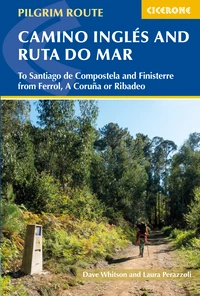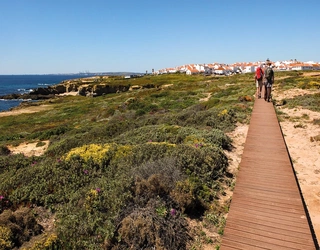Pilgrim Credentials – everything you need to know
Caminos have become popular for their unique blend of spiritual journey, cultural exploration, and physical challenge, drawing pilgrims from all walks of life. A pilgrim credential, or pilgrim passport, is essential for marking your journey, serving as a record of your progress and providing access to pilgrim accommodation. Here’s what you need to know.
Camino de Santiago: Camino Frances
Guide and map book - includes Finisterre finish
£17.95
Guidebook and map book to walking the 784km Camino Frances from St Jean-Pied-de-Port in southern France to Santiago de Compostela in Spain, including an additional route to Finisterre. Split into 6 sections and 36 customisable stages, the guide lists over 500 pilgrim hostels. The map book covers the entire route, which can be walked in 4-5 weeks.
More informationWhat is a pilgrim credential?
The pilgrim credential is a document that certifies that the bearer is a pilgrim who is walking, cycling, or riding the pilgrimage on horseback. It allows pilgrims to stay overnight in pilgrim lodging (often hostels that are public and church run) and, if stamped for at least the last 100km (or 200km if cycling) of the route, it qualifies the bearer to receive a testimonial completion certificate at the endpoint.
Is it the same thing as a pilgrim passport?
A pilgrim passport and a pilgrim credential generally refer to the same thing, but the term used can vary depending on the region or organisation. The name 'pilgrim passport' is commonly used in English-speaking regions, while 'pilgrim credential' may be used more in Spanish-speaking areas (credencial) or by specific pilgrimage organisations. Both are official documents that pilgrims carry on their journey. These credentials are stamped at various locations along the pilgrimage route as proof of progress.
What information is on a pilgrim credential?
A credential usually includes the pilgrim’s name, home country, starting place, and 20 or more blank squares for stamps. A pilgrim's blessing is often included too.
Is it just for the Camino de Santiago, or for other pilgrimages too?
While the pilgrim passport or pilgrim credential is most closely associated with the Camino de Santiago, it is also used for other pilgrimage routes.
What are the requirements?
Pilgrims must obtain two stamps per day from public buildings, shops, cafes, or churches. Each stamp (sello) must show the date clearly. Stamps should be from places located at a visible distance from one another, as this serves as proof of walking or cycling the Camino.
Where do I get my pilgrim passport?
For the Camino de Santiago, approved pilgrim credenciales are available either from the national confraternity in your country of residence or an albergue or pilgrim information centre along the Camino. The major English-speaking confraternities are:
- Australia and New Zealand:Australian Friends of the Camino
- Canada:Canadian Company of Pilgrims
- Ireland:The Camino Society of Ireland
- South Africa:Confraternity of St James South Africa
- United Kingdom:Confraternity of St James
- United States:American Pilgrims on the Camino
For the Via Francigena, it’s best to order a credential in advance from the European Association of the Via Francigena, which offers official credentials through its partner, SloWays (€5 plus shipping, allow 1–2 months).
Check out local tourist offices, cathedrals, or pilgrimage organisations for advice on all other pilgrimages. If there is no place near where you're based, there will likely be somewhere at the most common starting points of the Camino.
How much do they cost?
While costs vary depending on the route and purchase point, pilgrim passports are generally around €3-5.
Can I walk a camino without one?
Yes, you can walk without one, but having a pilgrim passport is highly recommended. Many pilgrim hostels prioritise beds for official pilgrims, so they require a credential as proof. Plus, no credential equals no certificate of completion, and both the passport and the certificate are fantastic souvenirs to keep after your trip.
How do I get my compostela (certificate)?
The compostela or certificate is a document that proves the pilgrimage according to the rules dictated by the church. For the Camino de Santiago, starting at Sarria, pilgrims must secure two stamps daily to confirm they have walked the requisite 100km (200km for bikers and horse riders) to receive their compostela. A second daily stamp can easily be secured from cafés or from many churches along the way. Since 2024, e-bike riders have not been eligible to receive a compostela.
At the pilgrim office in Santiago (Rúa Carretas, no.33, ) pilgrims can present their completed credencial and receive a compostela (free) and a distance certificate (€3) with their name translated into its Latin equivalent, that documents the distance walked. For a small fee of €2 the office sells cardboard tubes to protect your compostela on your trip home.












